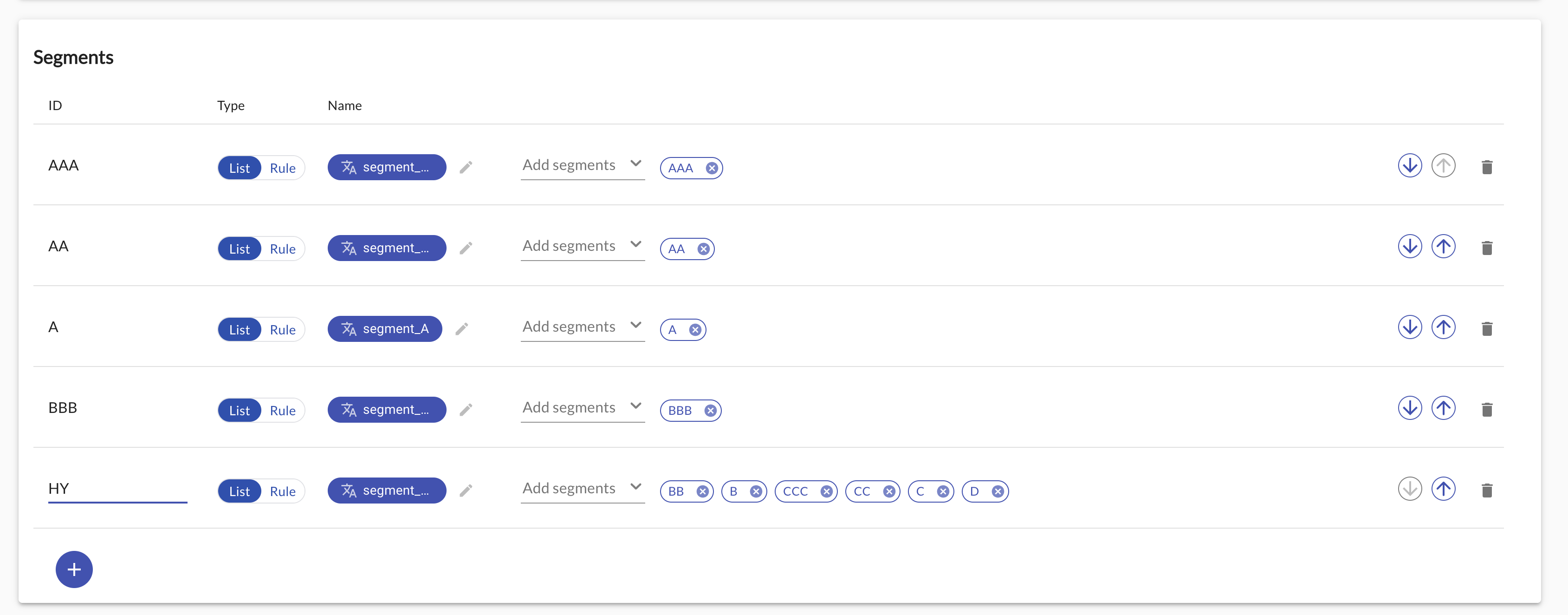Working with Segmentations
Segmentations
Segmentations are used to generate the optimal structure for a visualisation (e.g. table or chart) by defining how data will be aggregated. Segmentations are a part of the reporting business logic (see Business Logic (Concepts Guide)).
This page describes the features of a segmentation. See also Best practices to use Segmentation for a more in depth discussion about how to use segmentations.
Types of segmentations
Type | Description | |
|---|---|---|
Base Segmentation | Base segmentations like currency, country, asset class are typically delivered by the source systems (e.g. a portfolio management system) and are described by a source API
| |
Derived Segmentations | In reporting we typically don’t want to list all currencies invested but a rather more optimised break down to populate a table or chart., e.g. CHF, USD + next 3 largest currencies + a rest segment (aggregating all other currencies). Derived segmentations allow features like grouping, ordering, selection of segments on top of base segmentations or even other derived segmentations.
|
The Segmentation Editor
To create or modify a derived segmentation, the Segmentation Editor can be used. The UI is organised into the following sections:
Listing of segmentations | The list of segmentations allows to
|  |
Header and Settings |
|  |
Segments (Grouping) |
rule language
|  |
Segments | rule language | Alternatively to an include list, a segment can be defined by a  Supported syntax for filterPredicate:
|
Rest Segment |
|  |
Ordeing |
|  |
Selection |
|  |
